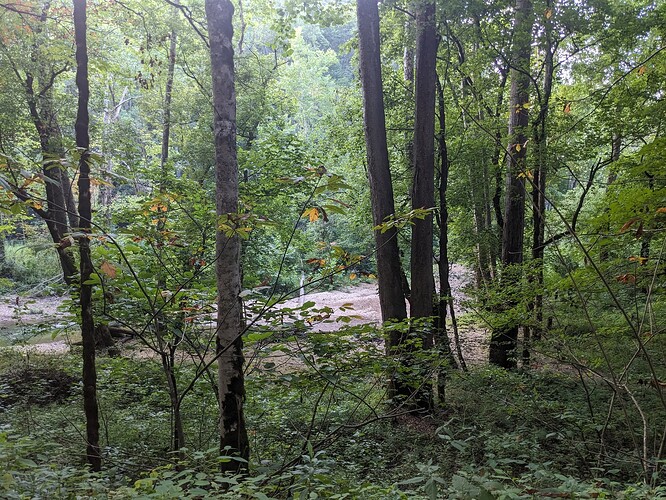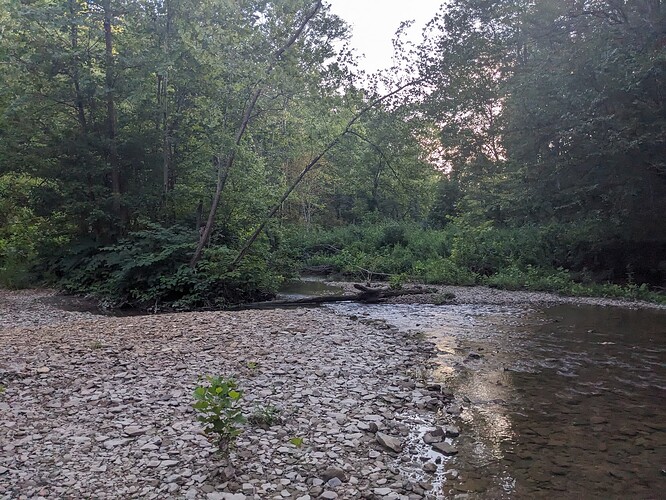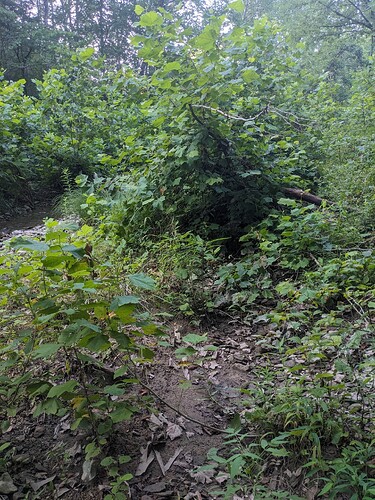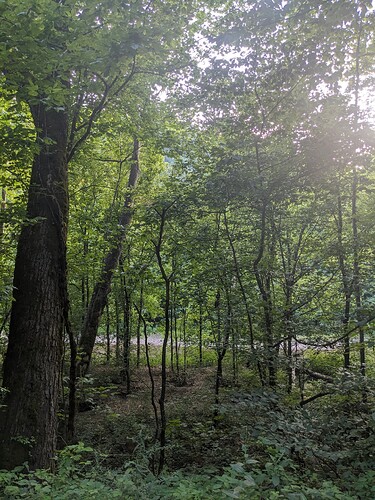Could this be an example of the native environment of Cucurbita pepo subsp. ovifera? Or if not, could it be an example of a environment where the earliest domesticated C. pepo were grown?
I was passing somewhat near this site so I took the opportunity to look around. It felt a bit like a pilgrimage at this point, although I should come back when I have more than a few minutes to look around. I think this will take about two hours to reach from where I live. As the crow flies it’s probably 60-70 miles from here.
I had a chance to visit the coordinates of the most recent potential wild Cucurbita pepo population documented in Eastern Kentucky, around the end of the 1980s or 1990ish. Some resources about the history and domestication of Cucurbita pepo refer to archeological sites or C. pepo populations in Eastern Kentucky – this is the area being described.
My understanding is that in Western Kentucky, a few hundred miles west of here, C. pepo gourds are not too uncommon. I have not had the opportunity to forage there myself. I have had contact with several people who have found them growing wild in Missouri where they seem to be even more common.
In Eastern Kentucky where I live, I have never come across any potentially wild C. pepo populations. But there are archaeological remains of small C. pepo fruit from thousands of years ago from relatively close by.
In Eastern Kentucky, as recently as the late 1980s or 1990, free growing C. pepo was collected in Powell County. This is an area with ancient native settlements with archaeological remains of small C. pepo subsp ovifera fruit, and we could speculate either that Powell County and Eastern Kentucky was once part of the wild range of C. pepo subsp ovifera, or that the 1990s free growing population was a relic of an ancient domesticated variety. Both could be true or something else.
Having visited the coordinates of the Powell County site, I agree with a notation from the time that it’s hard to imagine this having escaped from a garden. Today just like 40 years ago it’s very far from any settlement or agriculture.
I had a chance to talk to one of the people who found fruit at this site back then. They unfortunately haven’t been in a position to spot it recently but they encouraged me to look to see if any is still growing in the area.
Edit: I have added seeds from four of the 2024 crosses to the Serendipity Seed Swap! (US). I made more crosses than I can pursue myself. These seeds should have about 10-35% egg gourd DNA.










